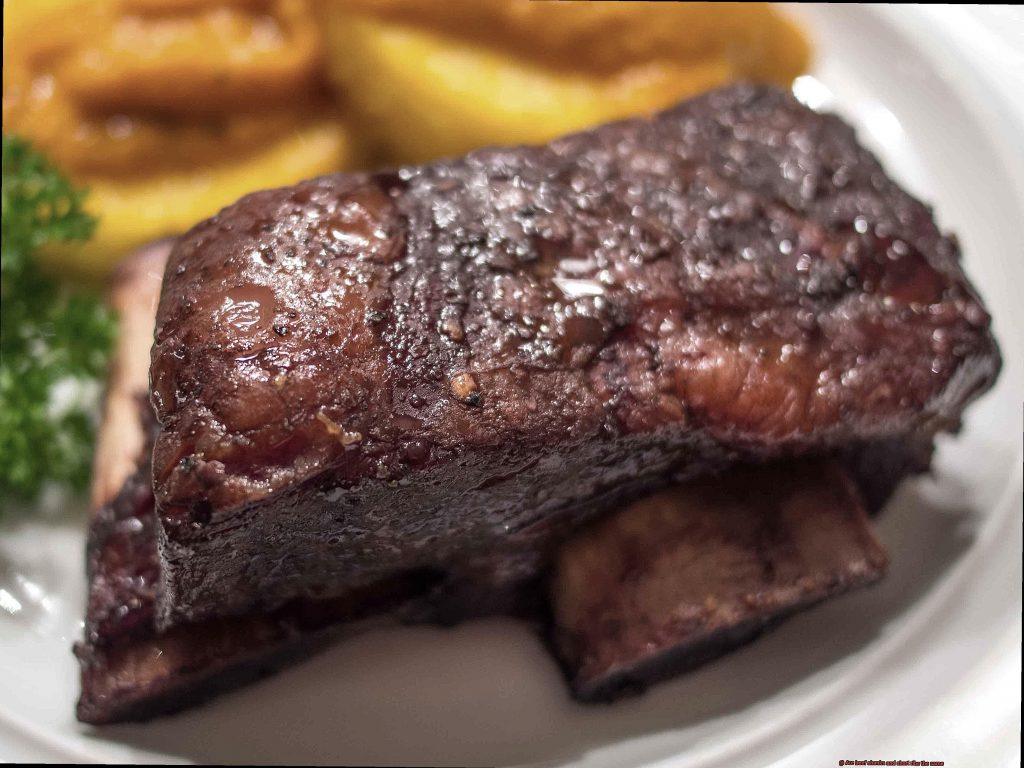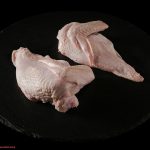Hey there, fellow meat enthusiasts. If you’re anything like us, you love nothing more than cooking up a delicious beef dish that’s sure to satisfy your taste buds. But when it comes to beef shanks vs. short ribs, things can get a little confusing. Are they the same thing? Do they have different flavors and textures? Fear not, because we’re here to clear up any confusion and help you become a bona fide beef expert.
At first glance, beef shanks and short ribs might look alike, but trust us – they couldn’t be more different. From their unique textures to their distinct cooking methods and flavors, these two cuts of beef are in a league of their own.
In this blog post, we’ll take an in-depth look at the world of beef and explore everything you need to know about shanks vs. short ribs. We’ll break down the characteristics of each cut, show you how to identify them at the butcher shop (because let’s face it – that can be daunting.), and give you our top tips for cooking them up perfectly every time.
Whether you’re a seasoned home cook or a professional chef looking to up your game with some new knowledge on all things beef-related, this post is for you. So sit back, crack open a cold one (or pour yourself a glass of red wine – we won’t judge), and get ready to dive into the wonderful world of beef shanks and short ribs.
Contents
What are Beef Shanks and Short Ribs?
Beef shanks and short ribs are two distinct cuts of beef that can elevate any dish. Although they are both flavorful, they differ in texture, flavor, and cooking methods. Knowing these differences is crucial in selecting the right cut of beef for your recipe.
Beef shanks are taken from the leg of the cow and have a bone running through the center. They are a tougher cut of meat that requires longer cooking times to break down the connective tissues. This process creates a rich and beefy flavor that is perfect for stews, soups, and braised dishes. Beef shanks are also a great source of collagen, making them ideal for making bone broth.
Short ribs, on the other hand, come from the rib section and have small pieces of bone attached to the meat. They are more tender than beef shanks due to their marbling with fat. Short ribs can be grilled or roasted to create a juicy and flavorful taste. They can also be cooked using slow methods such as smoking or sous vide.
When choosing between beef shanks and short ribs, consider the cooking method and desired flavor profile of your dish. Beef shanks are perfect for slow-cooked dishes that require a richer flavor, while short ribs are ideal for quick cooking methods and milder flavor profiles.
Differences in Texture
Beef shanks are known for their tough, sinewy texture. This is because they come from a heavily exercised part of the cow’s body, resulting in a lot of connective tissue that gives the meat its chewy texture. But don’t be fooled by their toughness – beef shanks are bursting with flavor thanks to the rich marbling of fat throughout the meat. This makes them ideal for slow-cooking methods like braising or stewing, which break down the connective tissue and result in a rich and flavorful meal.
In contrast, short ribs have a more tender and succulent texture. They come from a less-exercised part of the cow’s body and have a higher fat content than beef shanks. This results in a juicier texture that is well-suited to grilling or broiling. While they can also be used in slow-cooked dishes, they don’t require quite as much time to break down as beef shanks do.
Now that we’ve covered the basics, let’s dive deeper into the differences between these two cuts of meat.
Texture:
- Beef shanks: tough, sinewy
- Short ribs: tender, succulent
Flavor:
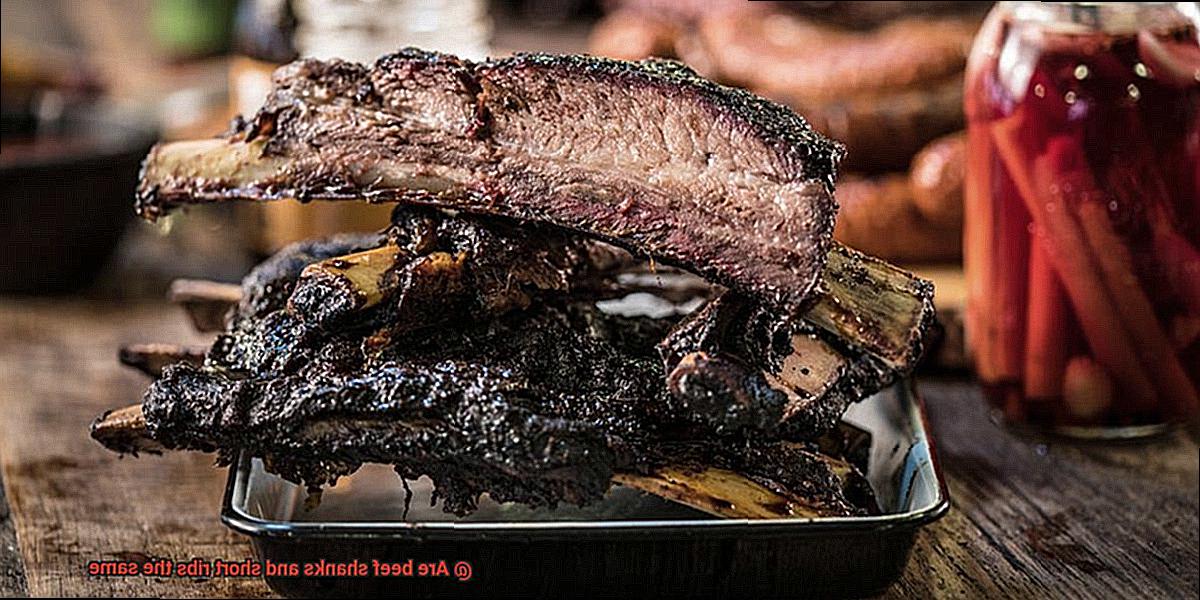
Cooking methods:
- Beef shanks: ideal for slow-cooking methods like braising or stewing
- Short ribs: perfect for quick cooking methods like grilling or broiling, but can also be used in slow-cooked dishes
Differences in Flavor
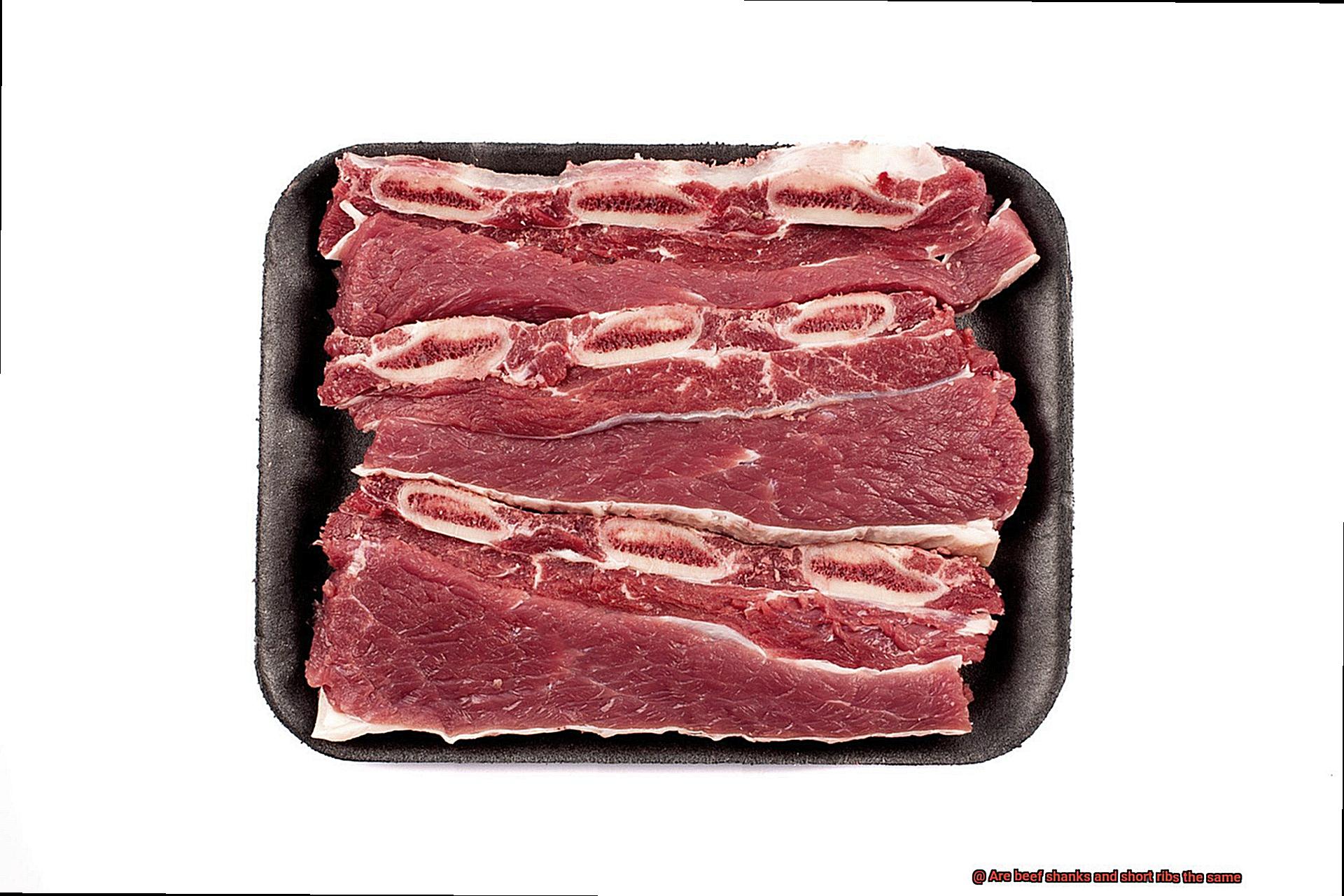
Now, we’re diving deep into the differences in flavor between two mouthwatering options: beef shanks and short ribs. Get ready to salivate as we take a closer look at these delectable cuts.
-
- Let’s start with beef shanks – the meaty gems that come from the lower leg of the cow. At first glance, you might think they’re too tough to be worth your time – but don’t be fooled. When cooked low and slow, the connective tissue in beef shanks breaks down, resulting in a rich and hearty flavor that will leave you craving more. And if that’s not enough to get your taste buds tingling, the bone marrow in beef shanks adds a deep and savory taste to any dish.
- Now, let’s talk about short ribs – the tender and juicy meat that springs from the rib section of the cow. Thanks to their high fat content, short ribs are bursting with flavor and are perfect for braises or stews that require long cooking times. But their tenderness isn’t just due to their fat – it’s also because they come from muscles that are used less frequently than those in beef shanks.
When it comes to seasoning, both these cuts can benefit from classic spices like salt and pepper, as well as herbs like thyme or rosemary. But keep in mind that their unique flavors and textures may require different cooking methods and flavor profiles.
So how do you choose between these two delicious options? If you’re looking for a rich and hearty flavor, beef shanks are the way to go. But if you want something tender and juicy, short ribs are your best bet. Either way, knowing the differences in flavor between these two cuts will help you create a dish that’s sure to impress.
Similarities Between the Cuts
While these two cuts of meat may appear dissimilar at first glance, they actually share several similarities that make them both fantastic options for slow-cooked, melt-in-your-mouth dishes.
Firstly, both beef shanks and short ribs hail from the lower region of the cow and are renowned for their rich, robust flavor. Additionally, both cuts necessitate slow cooking techniques to break down the tough connective tissue and produce a tender, melt-in-your-mouth texture. As an added bonus, both cuts contain collagen, a protein in connective tissue that breaks down during cooking to create a gelatinous texture and rich flavor.
In terms of appearance, both cuts are thick and meaty with bones running through the center. Nonetheless, beef shanks tend to be larger and more cylindrical in shape, whereas short ribs are shorter and more rectangular. Therefore, depending on your recipe and cooking method of choice, one cut may be more appropriate than the other.
Despite their similarities, there are also some vital differences between beef shanks and short ribs. For example, beef shanks come from the leg of the cow and are typically leaner overall with less visible fat. Comparatively, short ribs derive from the ribcage and possess more visible marbling throughout the meat, which contributes to their rich flavor and tender texture.
Uses for Beef Shanks and Short Ribs
Beef shanks and short ribs may be different, but they share a commonality in their ability to deliver robust and delectable tastes to any meal.
First up, let’s explore the wonders of beef shanks. Hailing from the leg of the cow, these cuts are typically large and tough. However, with a little low and slow cooking, they transform into tender and succulent masterpieces. Osso buco is a classic dish that showcases the beauty of beef shanks, but they also excel in hearty beef stews. The bone marrow within the shank imparts a richness to soups and broths that will leave you feeling warm and satisfied on chilly evenings.
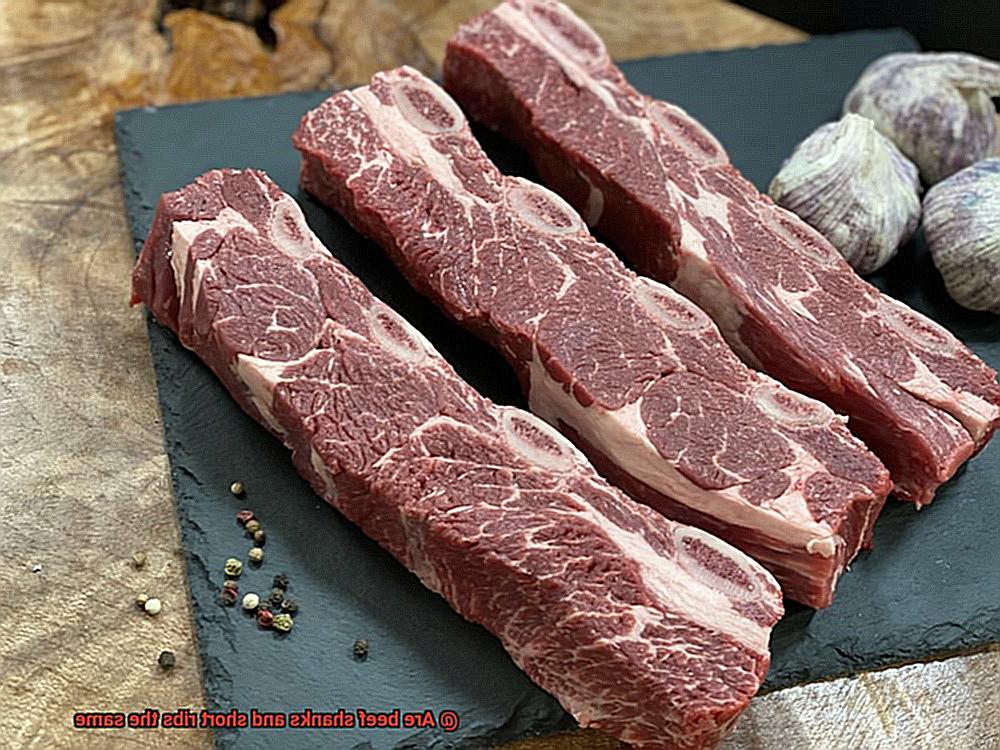
Now, let’s turn our attention to short ribs. These cuts come from the rib area of the cow and are shorter than other rib cuts. Tough in texture, but with a long braise or slow cook, they become irresistibly tender. Korean-style galbi or barbecued beef ribs are popular dishes that make use of these flavorful cuts. Your mouth will water as you savor their melt-in-your-mouth texture.
But wait, there’s more. Beef shanks and short ribs can also create rich and savory broth or stock that serve as perfect bases for soups, stews, and gravies. This adds an extra layer of depth to your dishes that is hard to resist.
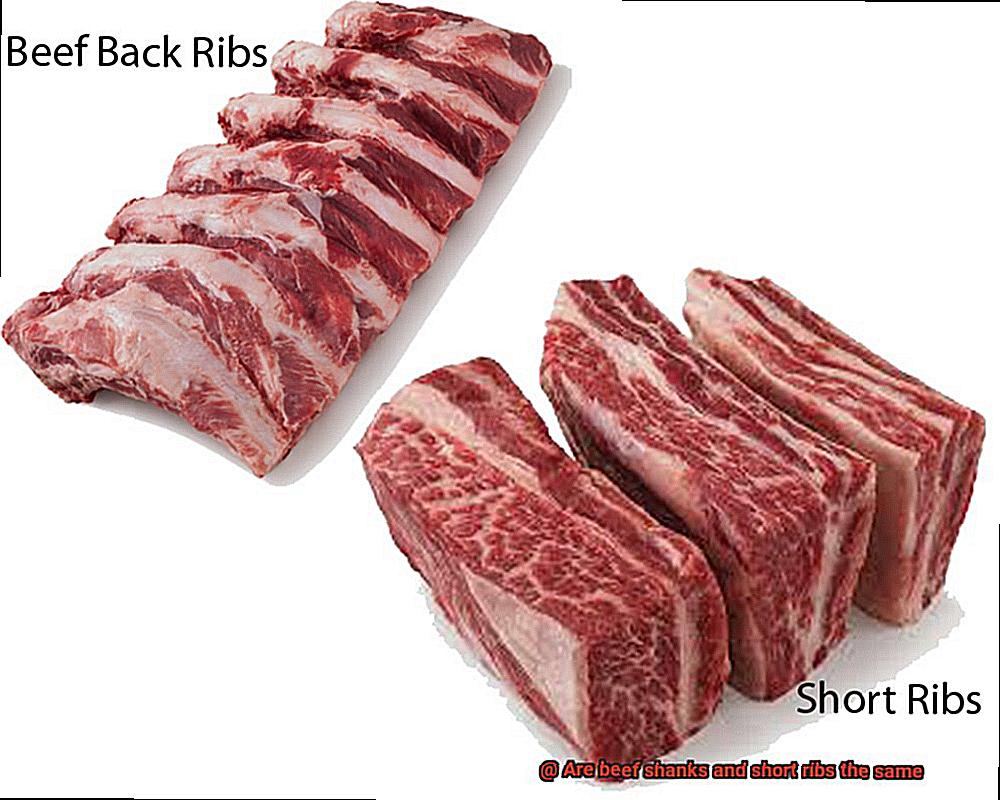
Selecting the Right Cut for Your Dish
Look no further than the differences between beef shanks and short ribs. These flavorful cuts are both delicious in their own right, but choosing the right one for your dish can make all the difference.
Starting with beef shanks, this cut comes from the leg of the cow and is known for its toughness. However, when slow-cooked using methods like braising or stewing, beef shanks become incredibly tender and full of rich flavor. The combination of meat, bone, and marrow creates a succulent taste that will leave your taste buds satisfied.
On the other hand, short ribs come from the rib area of the cow and typically consist of bone-in cuts with a good amount of meat and fat. Although also tough, short ribs can be cooked in a variety of ways such as grilling or slow-cooking. When prepared correctly, short ribs become juicy, tender, and packed with flavor.
It is essential to note that although both cuts require slow cooking, they each have unique cooking times and techniques. Beef shanks require a longer cooking time due to their toughness while short ribs can be cooked for shorter periods or grilled to perfection.
Now, how do you select the right cut for your dish? Consider the recipe you’re following and what flavors and textures you want to achieve. If you’re looking to create a hearty stew or soup that requires a longer cooking time, beef shanks are an excellent choice. If you prefer something that can be grilled or cooked quickly with loads of flavor, then short ribs are perfect for you.
Slow Cooking Methods for Beef Shanks
While this cut of meat may seem tough at first, with the right slow cooking method, it can be transformed into a succulent and delicious dish. As an expert in slow cooking methods for beef shanks, let me walk you through the different techniques.
First up, we have braising. This method is all about allowing the meat to cook in its own juices and become incredibly tender. To start, sear the beef shanks in a hot pan to create a delicious crust on the outside. Then transfer the shanks to a large pot or Dutch oven and add enough liquid (such as broth or wine) to come halfway up the meat. Throw in some aromatics like onions and garlic, cover the pot with a tight-fitting lid, and let it simmer on low heat for several hours until the meat is falling off the bone. The result is a melt-in-your-mouth dish that’s perfect for any occasion.
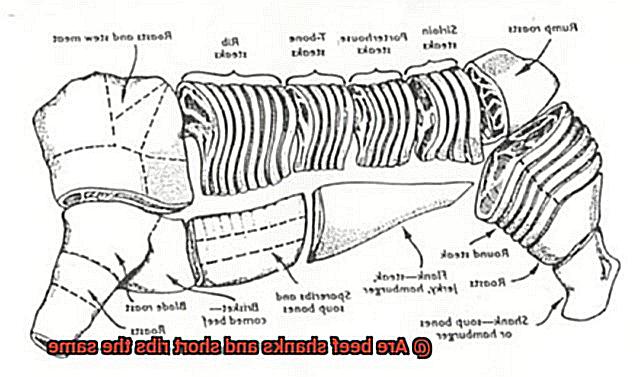
If you’re in the mood for something heartier, stewing might be your go-to method. Brown the beef shanks in a hot pan and transfer them to a large pot. Add vegetables like carrots, celery, and onions along with enough liquid (such as broth or tomato sauce) to cover the meat. Season with herbs and spices, bring everything to a boil, then reduce the heat to low and let it simmer for several hours until the meat is tender and bursting with flavor. This method is perfect if you’re craving a comforting and filling meal.
Finally, we have slow roasting. This method involves cooking the beef shanks in a low-temperature oven for several hours, resulting in meat that’s juicy and packed with flavor. Season the beef shanks with salt, pepper, and herbs before placing them in a roasting pan. Add some liquid (such as wine or broth) to the pan and cover it tightly with foil. Roast everything in a 300-degree oven for several hours until the meat is tender and easily pulls away from the bone. The result is a slightly different texture than braising or stewing, but equally delicious.
Quicker Cooking Methods for Short Ribs
There are plenty of quick and easy cooking methods available to satisfy your cravings. Here are some options:
Stovetop cooking is a fantastic method that involves searing the short ribs in a hot pan to create a delicious crust, followed by simmering them in liquid until they’re tender and juicy. In just two hours, you can have perfectly cooked short ribs with an irresistible flavor profile.
If you’re a fan of grilling, then grilled short ribs are a must-try option for you. Though they might not be as tender as slow-cooked short ribs, grilled short ribs still pack a ton of flavors. All you have to do is season them with your favorite spices or marinade and grill them over high heat until they’re charred on the outside and cooked just right on the inside.
But what if you’re looking for something even quicker? Enter the pressure cooker – a kitchen appliance that can produce mouth-watering, fall-off-the-bone meat in just 45-60 minutes, depending on the thickness of your short ribs. Simply season them up, add some liquid, and let the pressure cooker work its magic.
hTt3wQp2dbQ” >
Conclusion
In summary, beef shanks and short ribs are two distinct cuts of beef with their own unique characteristics that can elevate any dish. Beef shanks come from the cow’s leg and boast a tough, sinewy texture that requires slow-cooking methods like braising or stewing to break down the connective tissue and create a rich, hearty flavor. In contrast, short ribs hail from the rib section and have a more tender and succulent texture due to their marbling with fat. They can be grilled or roasted for a juicy and flavorful taste.
Although both cuts share similarities in their robust flavor profiles and slow-cooking requirements, they differ in appearance, fat content, collagen levels, and cooking times. Therefore, choosing the right cut for your recipe depends on your desired flavor profile and cooking method.
Whether you’re simmering beef shanks to create a savory broth or grilling short ribs to enjoy their juicy tenderness, these delicious cuts of meat are sure to impress your guests.

